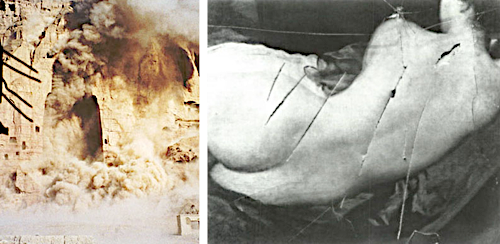Undergraduate Seminar:
The Destruction of Art

This course will focus on acts of violence and defacement directed at works of art. We will study examples from a wide range of historical global cultures, including Christian iconoclasm in the Medieval and Reformation periods, the effacement of demons and the renewal of potent miracle-working images in Renaissance Italy, the "extirpation of idolatry" in Colonial Latin America, the smashing of the gallery of kings on the façade of Notre Dame in Paris during the French Revolution, the slashing of Velazquez's Rokeby Venus, the destruction of Diego Rivera's murals in the RCA building in New York, and the dynamiting of the Bamiyan Buddhas in Afghanistan. These transformative acts will be contextualized and conceptualized in religious, social, and political terms; the conventional terminology used to characterize the destruction of images (iconoclasm, desecration, censorship, renewal) will be interrogated. We will explore how visual art can operate as sites of contestation, where competing belief systems, regimes of knowledge, aesthetic values, and political ideals come into conflict and are given charged expression. We will be interested in the so-called "power of art" to elicit such strong responses from viewers and we will explore cultural understandings about the agency of images.
Estimated Cost of materials: less than $100.
HISTART category for concentration distributions: D. Europe and the US, 2. Medieval, 3. Early Modern
Course Requirements: Assessment will be based on participation in the discussions of the weekly readings, a midterm examination, and a 10-15-page final research paper.